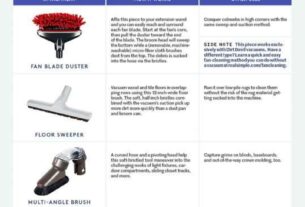As a machinist, you know that precision is key in every job. And when it comes to milling and machining, tramming is one of the most important steps to ensure accuracy. That’s why a tramming tool is an essential addition to your arsenal.
In this comprehensive guide, we’ll delve into everything you need to know about tramming tools – from what they are and how they work to the different types available and how to use them effectively. So let’s get started!
What is a Tramming Tool?
A tramming tool, also known as a tram tool or tram gauge, is a device used to measure the alignment of the spindle or milling head with respect to the table or workpiece. In other words, it helps you determine if your mill or lathe is perpendicular to the surface on which it’s placed.
Why is Tramming Important?
Tramming is crucial because it ensures that your cutting tools are perpendicular to the workpiece. If your mill isn’t properly aligned, your cuts won’t be accurate and consistent. This can lead to scrap material, wasted time, and even damage to your machine.
Types of Tramming Tools
There are several types of tramming tools available on the market. Here are some of the most common ones:
1. Dial Test Indicator
A dial test indicator (DTI) is perhaps the most popular type of tramming tool among machinists. It consists of a gauge mounted on a magnetic base that can be attached to the spindle or milling head. The gauge has a needle that moves along a dial face in response to any movement in the spindle.
2. Edge Finder
An edge finder is another type of tramming tool that works by finding the edges of a workpiece and aligning them with the machine axis. It consists of a cylindrical body with a spring-loaded tip that moves in and out as it makes contact with the edges.
3. Wiggler
A wiggler is a versatile tramming tool that can be used for a variety of purposes, including centering holes and aligning workpieces. It consists of a cylindrical body with three or four probes that move independently of each other. Each probe has a different shape and can be used for different tasks.
How to Use a Tramming Tool
Using a tramming tool is relatively simple, but it does require some patience and attention to detail. Here’s a step-by-step guide:
1. Mount the tramming tool on the spindle or milling head.
2. Position the gauge or probe on the table or workpiece.
3. Zero the gauge by adjusting it until the needle reads 0.
4. Rotate the spindle or milling head 180 degrees and take another reading.
5. Compare the two readings. If they’re equal, your mill is perpendicular to the table. If not, adjust the machine until both readings are the same.
Tips for Using a Tramming Tool
Here are some tips to help you use your tramming tool more effectively:
– Always use the same spot on the table or workpiece when measuring.
– Check your measurements multiple times to ensure accuracy.
– Keep your tramming tool calibrated and in good condition.
– Don’t forget to check your mill’s alignment periodically, even if you haven’t moved it.
Conclusion
A tramming tool is an essential device for any machinist who wants to achieve accurate and consistent results in their milling and machining work. By using one of these tools, you can ensure that your cutting tools are perpendicular to your workpiece, resulting in high-quality parts and reduced waste.
So whether you choose a dial test indicator, edge finder, wiggler, or another type of tramming tool, make sure to use it regularly and correctly. Your machine – and your customers – will thank you for it!
Wiki Reference:
Tramming Tool. (2021, September 7). In Wikipedia. Retrieved September 13, 2021, from https://en.wikipedia.org/wiki/Tramming_tool




